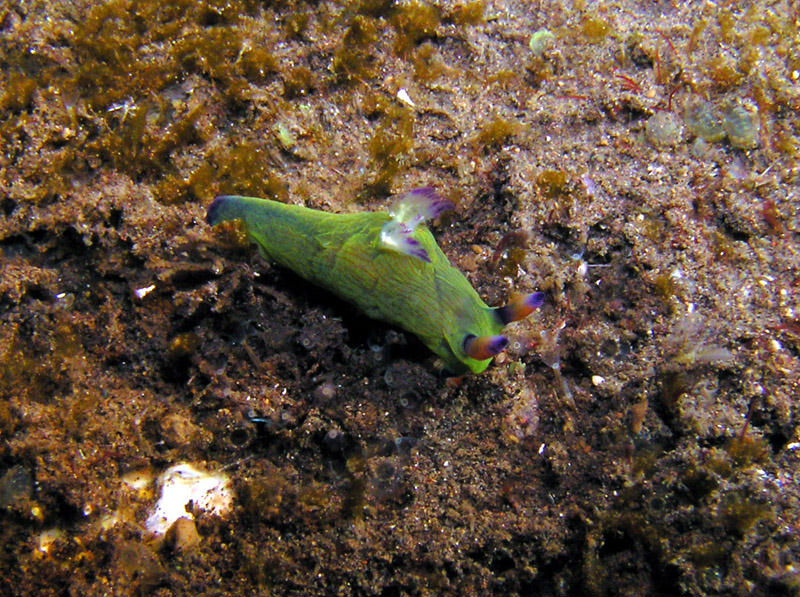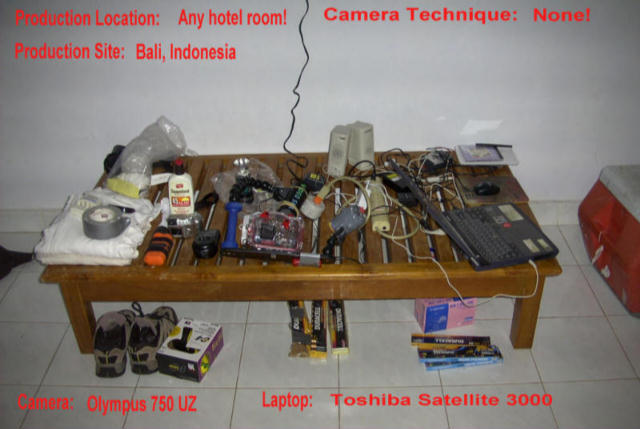 |
Tambja amakusana
Photos couresty of WebmasterTulamben, Bali, Indonesia
Digital Photo
Tambja amakusana Baba 1987
Baba's original description of this neat little phanerobranch dorid states it is - "Green color of body above and below uniformly yellowish green (= grass green) without any trace of spots. The rhinophoral clavi yellow and the branchial rachis yellowish green. There are deep blue (= indigo blue) markings visible on the tips of the rhinophores, branchial plumes and tail." That's as close as I can come with the identification of webmaster Mike's photo here.
Specimens closely matching Mike's animal shown here are presented on Page 64 of Ono's Kerama nudibranch guide, page 60 of Suzuki's Izu Peninsula guide and in Coleman's 1001 Nudibranchs on page 46 listed as Tambja sp .
I even wonder if this isn't the same species as referred to as Nembrotha sp. B,, by Takamasa Tonozuka in his new Opisthobranchs of Bali and Indonesia , just a different color morph, as the gills, rhinophores and tail colors are the same.
Mike's specimen was photographed in the River Area, Tulamben, Indonesia at a depth of 60 feet over coral sand bottom. This makes it geographic distribution to be the waters of Japan and Indonesia. Little is known otherwise about this species. Let us know if you have seen it.
References:
Baba, K. 1987. Two new green coloured species of Tambja from Japan (Nudibranchia: Polyceridae). Venus, Japanese Journal of Malacology, 46(1): 13-18.
Coleman, Neville. 2001. 1001 Nudibranchs - Catalogue of Indo-Pacific sea slugs. Neville Coleman's Underwater Geographic, Springwood, Queensland.
Ono, Atsushi. 1999. The Opisthobranchs of Kerama Islands. Hankyu Communications, Tokyo.
Suzuki, A. 2000. The Opisthobranchs of Izu Peninsula. Hankyu Communications, Tokyo.
Tonozuka, Takamasa. 2003. Opisthobranchs of Bali and Indonesia. Hankyu Communications, Tokyo.
Danville, Calif
Nov. 2003

My trip to Bali, Indonesia in October heralded my entry into the digital underwater experience. An experience long overdue by the way! I purposely left my trustworthy, venerable Proline film camera system at home so I would be forced to take the total immersion and not have the film camera as a distraction in this regard. One immediate benefit was some 15 lbs less weight to carry on the trip. The Ikelite Ai is a great strobe but those D cells are heavy and an obvious item of interest to airport security personnel.
|
Taxonomic information courtesy of:

David W. Behrens
Author:
Pacific Coast Nudibranchs
Send Dave mail at dave@seachallengers.com
|
